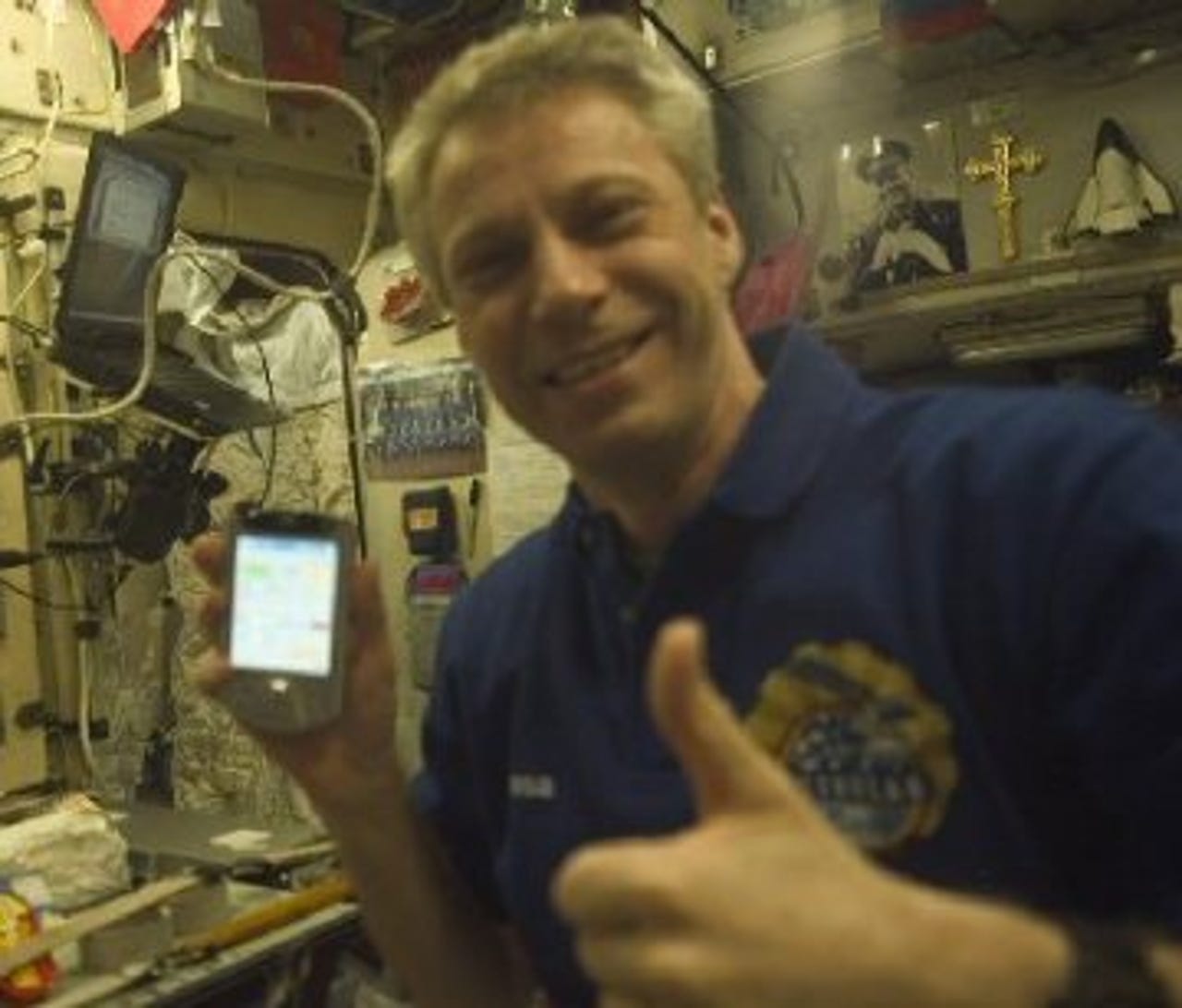Photos: PDAs in space


Astronauts get mobile in the International Space Station
Astronauts living on the International Space Station (ISS) will soon be using PDAs to help them with a variety of on-board tasks.
One intended use is the PDA Depressurisation Program (PDP), which is activated in the event of depressurisation and computes the time left before astronauts have to abandon the space station.
It then uses speech synthesis to notify crew members about the time remaining before they have to jump ship.
The PDP - which has been developed by the European Space Agency (ESA) - was tested by astronaut Thomas Reiters on the ISS from July to December 2006, and will become part of the standard set of software packages loaded on each PDA for ESA astronauts.
Using PDAs as a voice or speech processing platform to get astronauts chatting to each other and the ISS' computer systems is another - less frightening - application under consideration at ESA.
It is envisaged that crew-to-crew comms will combine wireless communication systems with VoIP, and the crew-to-system contact would be via speech synthesis and voice recognition software.
Photo credit: ESA
Another upcoming application is the Inventory Management System (IMS), which is responsible for keeping track of the location of all items stored on-board the ISS.
Starting in March 2007, the old barcode-based system will be revamped. The old barcode reader terminals - pictured to the left - will be replaced with PDAs.
A representation of the PDA system is pictured to the right, with a barcode reader attached to the top of the handheld and connected to the IMS via a wireless network.
PDAs are also being investigated by ESA and Nasa as an alternative or complementary platform for some applications currently running on the ISS laptops for situations where a laptop may be inconvenient to use because it is too big or cumbersome.
PDAs are already used by astronauts on-board the ISS for personal computing and entertainment purposes.
Photo credit: ESA